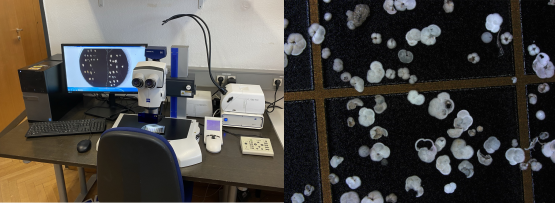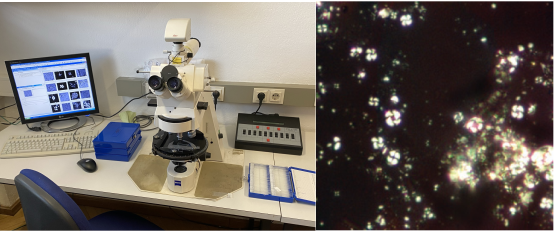Biostratigraphy
Paleontology is the science of understanding life and – in particular – the evolution of species in the geologic past to discover the evolutionary history of life. As Paleontologists, we know that evolution is an immutable force in nature that results in a gradual but irreversible adaption of species to the environment they live in. this way – over geologic time spans – new species can appear. Conversely, other species that cannot adapt fast enough go extinct.
A biostratigrapher uses this temporal component of evolution to chart and correlate a global history of changing species through time. In the fossil record, species' appearance and disappearance be traced throughout the Phanerozoic and even beyond. In addition, identifying fossils allows us to constrain the formation of the rocks when the species was still alive.
The Paleontology and Stratigraphy working group at the Institute specializes in microfossils (calcareous nannofossils, foraminifers, conodonts) invertebrates (Cnidaria, Gastropods, and Mollusks) as biostratigraphic markers throughout the Phanerozoic.

